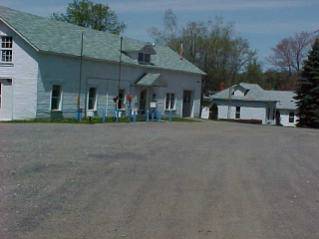National Fuel Gas
Company

The National Fuel Gas Company was formed in 1902. It eventually merged with or acquired assets of many companies. The United Natural Gas Company was one of these and it operated independently until 1974. These subsidiaries laid interconnecting pipelines, tying the many isolated systems into one big network.
In 1916,
Iroquois Gas Corporation, a National Fuel subsidiary, proved that significant
quantities of natural gas could be stored in tight formations of depleted gas
reservoirs. National Fuel at Zoar Field developed the first underground natural
gas storage reservoir in the
Other firsts followed: the first gas-fired generator to produce electricity for pipeline protection; in 1973, the first meter-order system to provide computerized scheduling and routing; in 1993, operation of one of the first state-of-the-art computerized one-call centers to increase the efficiency of customer responses by telephone. Today, natural gas is the most popular, environmentally sound and economic fuel choice of homeowners and businesses in the country. National Fuel has been an innovative leader in the development of this industry.
National
Fuel Gas Company, incorporated in 1902, is a diversified energy company with its
headquarters in
Exploration and Production
Utility
Pipeline and Storage
Timber
International
Energy Marketing
Today the gas field in the Clermont still produces some gas and is used for storage. It is evident that the operation has declined considerably since the early years.
United
Natural Gas Company


In 1886,
the United Natural Gas Company constructed an 87-mile wrought-iron gas
transmission line from the gas producing areas near Clermont and other areas in
Mc Kean County to
In 1899, the world’s first 1,000 horsepower engine-driven compressor was installed by the U.N.G. These compressors were able to effectively raise and lower gas pressures and control gas flow, allowing gas pipelines to handle increasingly large quantities of gas. By the early 1900’s, natural gas had proved to be an ideal fuel for cooking, heating water, heating homes and lighting.
The

U.N.G. Clermont Office
Art Hovis
was the superintendent even though he resided in Smethport.
There were several foremen throughout the early years including Charles
Clark, Mark Burmingham,
Bill Razey, Roy Dunkle, Fred Kane, Paul Williams, Paul Searfoss , Joe Searfoss, and Clair Flickinger, Jr.
The Clermont office was the headquarters for field operations not only in Clermont but also in surrounding areas. The company provided the foreman with a house in Clermont and had two houses at five mile for some of its employees. Charlie Housen lived there for many years with his family and for a while the Dunkle family lived there. Even though there was no telephone service in Clermont in the early years the company maintained a line between Five Mile, Wellendorf and the Clermont office where the warehouse was located. The families would call into the office with a list of groceries. The groceries were purchased and sent out with a horse (named Colonel) and buggy with one of the men. In later years Jim Spadafore delivered things as he and his crew went by in the motorcar. A pump station was maintained at Wellendorf for pumping gas from the field to Halsey

U.N.G. office and warehouse
In
the early 1900’s teams of horses and wagons were used and a barn was located
next to the warehouse to house the horses. A blacksmith, Joe Dibler, was
employed to shoe the horses and work on metal tasks for the fieldwork. A pipe
yard was maintained to store pipe for use in the field.
In
addition to the regular foreman an assistant foreman was employed. For instance
Harold Hagman was an assistant under Jim Schnepp until his promotion to foreman
at